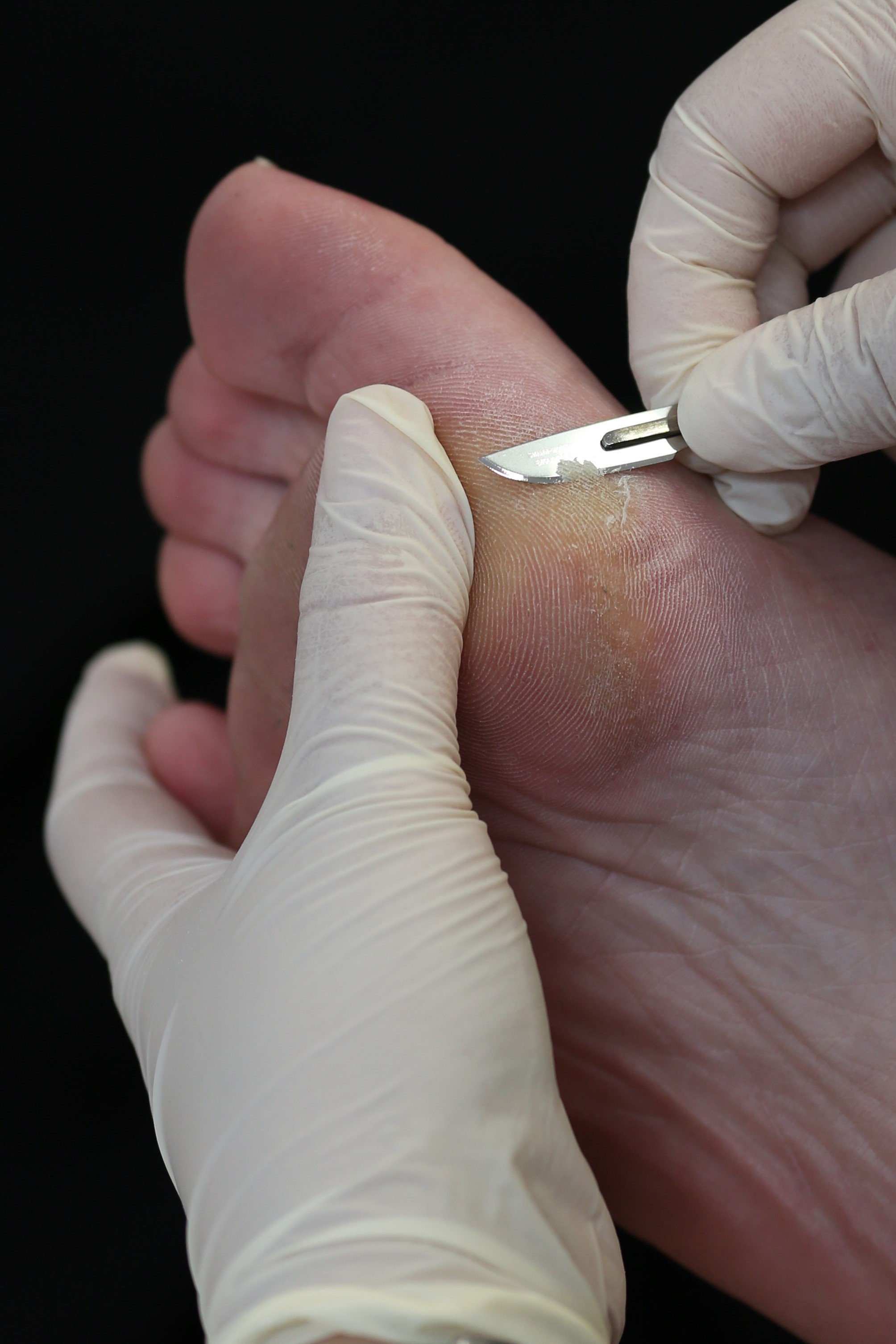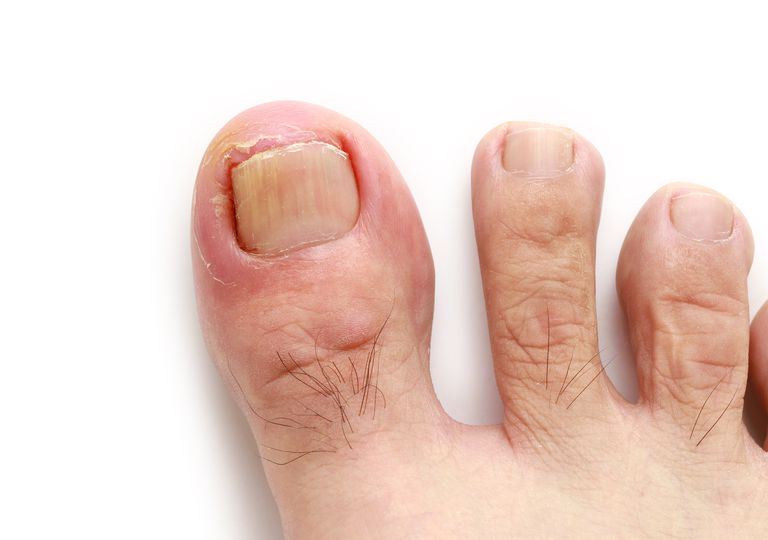Skin & Nail Conditions (dermatology)
Skin and nails are the first line of defence to block pathogens and other germs getting into your body. When pain arises in these areas, it is often a sign of high pressure areas on the feet or that hygiene has not been adequately maintained. Problems on skin and toenails can affect people of all ages, but are more commonly seen in the older population.
Please click the links below to learn more about some common skin and nail problems found in feet and legs:
Callus & Corns
Ingrown Toenails
Fungal Skin & Nails
Blisters
Warts (Verruca Pedis)
Callus & Corns
When part of your skin becomes thickened and hard, it indicates a high pressure area caused by repeated friction due to a person's gait (walking pattern), footwear or other irritation. While these areas are called calluses, corns are small and focal to an areaand feel like small 'plugs' of hard skin.
Treatment for callus and corns are done through the removal of the hard skin. However, to prevent the cause of buildup, deflecting the initial pressure and friction on the skin is necessary.
Ingrown Toenails
One of the leading causes of toenail pain are ingrown toenails, however did you know that there are four different types of ingrown toenails? The four types include:
Involuted toenails: this is where the shape of nail is rounded (similar to an upside-down U), as the anatomy of the nail itself is the cause of the problem, management through trimming the nail correctly is important.
Nail spikes: when the corner of the nail is not completely cut out (and typically is hiding beneath the skin) it can grow out and begin to wound the skin on the end of the toe, and potentially cause infection.
Wide nail plate: when the nail plate is too wide for the width of the nail bed, mild trauma can cause significant pain (kicking or stubbing toe). Skin also tends to bunch up on either side of the toenail in this presentation.
Hard skin: hard skin can also build up beneath the corners of the nails due to the shearing of the nail plate against the nail bed. In order to relieve this type of ingrown toenail, you must remove the hard skin and likely the part of the nail which causes the high pressure on the area.
Fungal Skin (tinea pedis) & Nails
A fungal infection of the nail can cause it to become brittle, thickened, and discoloured. The main problems associated with fungal nails are cosmetic but can be reduced and resolved through oral and topical medication alongside podiatry treatment.
Fungal skin can cause itchiness, dryness, and redness in the area affected and is commonly called "Athletes Foot" as it thrives in hot, sweaty environments. For a hassle-free, pain-free treatment head to our Lunula Laser Therapy page.
Warts (Verucca Pedis)
Sometimes being mistaken as corns, warts are viruses that are picked up from person to person most commonly in public facilities such as swimming pools. Treatment includes 'burning' or 'freezing' the active virus through modalities such as dry ice or acid.
Blisters
Blisters are caused by the combination of a high pressure area (due to shearing/friction) and moisture. They typically occur when performing repetitive movements for a long period of time (walking/running). Management involves removal of the pressure area (padding, dressings) and education revolving moisture control (sock and shoe rotation).





